Although the content for each course is developed independently by the course instructors, the Freeform Classroom is consistently adopted with the same five fundamental elements:
Non-Traditional Lectures
While the majority of previous STEM classes relied on passive, traditional lectuing, the Freeform classroom model continues to diverge away from this strategy. The Freeform classroom model highly emphasizes interactive and open-ended discussions, ample problem examples, demonstrations, and case studies paralleling real-world events.
.
Hybrid Textbook / Lecture Notes
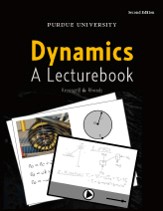 Rather than utilizing traditional textbooks, hybrid “Lecturebooks” are made available to students in each Freeform course. The Lecturebooks include pertinent background information; emphasizing fundamental engineering concepts and problem solving strategies, numerous problem examples, and white space for note-taking. Students are able to take notes in this white space during or outside of class while having all the necessary information available to them. The purpose of providing additional work space for the students is to allow them to establish their own baseline problem-solving skills. The practice questions utilized in these Lecturebooks consist of both Challenge Questions and Conceptual Problems.
Rather than utilizing traditional textbooks, hybrid “Lecturebooks” are made available to students in each Freeform course. The Lecturebooks include pertinent background information; emphasizing fundamental engineering concepts and problem solving strategies, numerous problem examples, and white space for note-taking. Students are able to take notes in this white space during or outside of class while having all the necessary information available to them. The purpose of providing additional work space for the students is to allow them to establish their own baseline problem-solving skills. The practice questions utilized in these Lecturebooks consist of both Challenge Questions and Conceptual Problems.
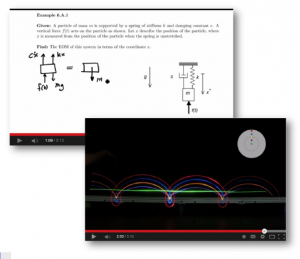
The Challenge Questions present students with a recently-lectured concept and implore them to solve a fundamentally new system or challenge a faulty technical assumption. Contrastingly, the Conceptual Problems require students to apply a newly learned problem solving strategy to an applicable engineering example. In addition, the Conceptual Problems may require the student to synthesize multiple pieces of technical information and solve a technical problem when given an open-ended narrative.
Extensive Multimedia Content
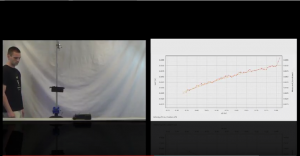 In addition to the Lecturebook, the Freeform research team has developed a series of videos titled “Visualizing Mechanics.” These videos are instructor-conceived and student-produced. That is, former Freeform students are able to provide techincal directions and voice-overs to re-create classroom demonstrations, or introduce parallel concepts as discussed in class. In addition to this ample supply of Visualizing Mechanics videos, Freeform students are given access to homework solution videos via the course webpage. These solution videos are intended to walk-through the homework problem in a step-by-step manner in order to effectively demonstrate conceptual knowledge.
In addition to the Lecturebook, the Freeform research team has developed a series of videos titled “Visualizing Mechanics.” These videos are instructor-conceived and student-produced. That is, former Freeform students are able to provide techincal directions and voice-overs to re-create classroom demonstrations, or introduce parallel concepts as discussed in class. In addition to this ample supply of Visualizing Mechanics videos, Freeform students are given access to homework solution videos via the course webpage. These solution videos are intended to walk-through the homework problem in a step-by-step manner in order to effectively demonstrate conceptual knowledge.
Course Blogs
Highly-interactive blogs threads, accessible from the course webpage, serve as venues for peer-to-peer and student-to-instructor virtual interaction. In addition to the blogs, the course webpage provides students immediate access to the course syllabi, homework assignments and solution videos, sample examinations, and the Visualizing Mechanics videos. The course webpage provides students with 24/7 accessibility, and provides instructors with the leniency in content delivery.The blog allows both students and instructors to communicate about homework assignments, classroom management/logistics, exam coverage, content corrections, etc. The Freeform Instructors and teaching assistants regularly populate the blog with discussion threads, in order to initiate and encourage conversation between the class.
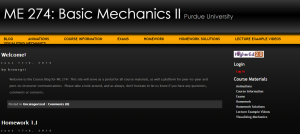
Aside from this initial installment, the discussion threads typically require minimal instructor intervention, as students regularly answer each other’s questions. As an added benefit, the blogs also provide a porthole through which instructors can anonymously observe their students and evaluate their understanding of the material.This informal evaluation has proven very useful for tailored lecture preparation and content modification.
Refined Student Assessment Tools
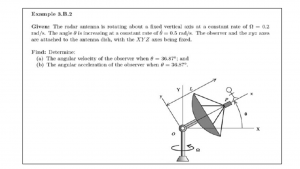
The traditional, homework-quiz-examination, problem-solving focused evaluation model long utilized in the initial Freeform structure has been replaced with a subtly-modified variant. In this refined evaluation model, homework assignments continue to be utilized as the principal practice ground for problem-solving skills. Unlike before, however, the newly-created problems are presented in the exact Given-Find format as the examples in the Lecturebook and the students are asked to follow a regimented problem-solving process. Given the strong encouragement for students to communicate and collaborate with one another via the course blogs, the emphasis in evaluation is placed on process over product, and final answers are de-emphasized. Periodic in-class quizzes, previously used as a form of time-constrained problem-solving assessment, are currently used to evaluate conceptual understanding. To this end, students are frequently encouraged to work in groups on these assignments and tackle questions which involve higher levels of cognition. Finally, examinations are used to not only formally assess the problem-solving skills and conceptual understanding covered by the homework assignments and quizzes, but also to provide a venue for technical synthesis as realized via more complex engineering problems.
Workbooks, instructional videos, case studies and concept-based evaluation tools, for example, all have been utilized, with varying degrees of success, in educational contexts. As such, the true novelty of Freeform largely stems from the simultaneous, near-seamless integration of these elements, its focus on introductory mechanics topics, and the scale of its reach (currently more than 1000 students per year).
